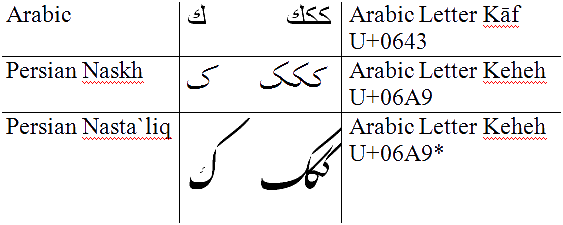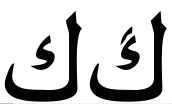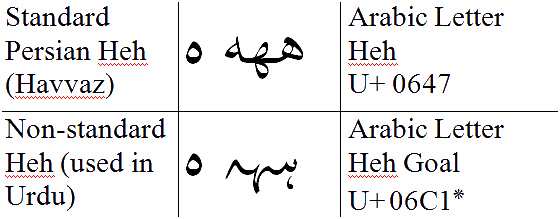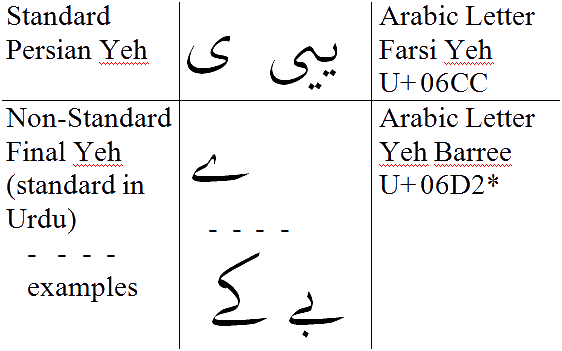|
The Letters Kāf, Heh Goal & Yeh Barree Some emerging localization issues at the font and encoding levels
|
The Persian and Arabic Kāf and official Unicode name and symbol: |
|
|
The word "keheh" is a Sindhi invention. The Sindhi script uses the Arabic Kāf as well as the Persian Kāf (traditionally called "Keheh" in Sindhi) which are used to write two different sounds in the Sindhi language. Since Persian only has one /k/ sound, it can get away with calling it Kāf. The word "keheh" is only known to Persian speakers who are well-versed in Unicode terminology and Persian computing. Otherwise, it is unheard of in Persian.Be aware that the Arabic Kāf lacks ANY stroke (called sar-kesh or sar-kash) on the final and stand-alone forms. This one stroke causes font developers a big headache because it interferes with the preceding letter. As for the little hamza-like character sitting in the Arabic and Persian Nasta`liq Kāf's, this is not actually a hamza but a mini-kāf. It is generally not seen in modern Persian Naskh fonts although there are a few such fonts which do include this character. Here you can see a screenshot from the Ottoman subset of the X Series fonts being developed by Behnam. He has made a point of making the mini-Kāf truly look like a Kāf. He has also make an innovation by making a mini-Gāf!
Whatever be the look of the Kāf in a font (which is a matter of taste and style), the encoding on Persian web pages should be Keheh (U+06A9). Unfortunately, the majority of Persian web pages use the Arabic Letter Kāf (U+06A9). *The Unicode Consortium has not yet quite figured out how to deal with Persian Nasta`liq and variant/non-standard characters for Persian. Should they be handled at the encoding or the font level? For which region of Persian do they apply? If you must write any or all of the infamous "se kāf," please be sure to use the correct one!! |
The Persian letter Gāf is similar to the Kāf with the addition of an extra stroke (double sar-kesh or sar-kash) on top:In classical Persian manuscripts, the Gāf often lacks the extra stroke and is identical to the Kāf, depending on the calligrapher. In modern typesetting, the Kāf and Gāf are often switched and this typographical error can lead to confusion on the part of the reader! |
Some Standard and Non-Standard Letters |
The Non-Standard (in Persian) Heh Goal
The Non-Standard Heh pictured directly above is often seen in Persian everyday handwriting as well as Persian Nasta`liq. You can borrow the Heh Goal (from Urdu) for your printed documents but careful using it on a webpage as that is considered non-standard for Persian. *The Unicode Consortium has not yet figured out how to deal with these variant/non-standard characters for Persian. Should they be handled at the encoding or the font level? For which region of Persian do they apply? |
The Non-Standard (in Persian) Yeh Barree |
Typing Ligatures in Word 2007 |
|
Unfortunately, Word 2007 (as previous versions) does not support
ligatures, or rather turning ligatures off. Therefore, if a letter such as Medial Heh Goal
or Medial Arabic Heh has more than
one form (same encoded character), then you will have a hard time typing
all four forms below:
One work-around is to type ZWJ after each letter. You can also Insert Symbol, of course. (Note that Macs can turn ligatures on and off with ease so this is a Windows-only problem for now!) |
| This page was updated when the need for non-standard letter recognition came up during the making of this alphabet training exercise for students of Persian language. |
|
BACK TO PERSIAN WORD-PROCESSING |



